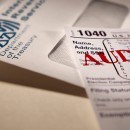 As our economy slowly improves, many small businesses have begun to see light at the end of the economic tunnel and are more optimistic about 2014.
As our economy slowly improves, many small businesses have begun to see light at the end of the economic tunnel and are more optimistic about 2014.
In fact, a recent survey from Inc. magazine suggests 37 percent of business owners view the prospects for 2014 as excellent with 45 percent characterizing their prospects as just as good as last year. Of those surveyed, nearly 80 percent also said they plan to increase hiring in the new year. With small businesses providing nearly 55 percent of all jobs in our economy, let’s hope they help the job market to bounce back.
As small businesses grow and expand, it is common for owners to focus the majority of their efforts on sales, marketing, operations and overall business management. As a result, owners often neglect the opportunity to improve the retirement planning for themselves and their employees. Often viewed as being expensive, complicated and inflexible, there are many misconceptions about the types of retirement plans available to small businesses. Since there are many options to choose from and each has their unique pros and cons, business owners should consider reviewing the following choices.
401(k) and Roth 401(k) — With higher contribution limits, flexibility in matching and vesting, penalty-free loans, in-service withdrawals and many other options, a 401(k) offers employers and their employees many attractive features — hence the reason for their popularity today.
Offering a 401(k) with all the features and benefits of a Fortune 500 company does not have to be cost prohibitive. According to Janeane Savino, regional retirement representative at Paychex, “Small business owners do not realize that a 401(k) plan is quite affordable. The tax credits the business may receive and the tax savings the owners realize by participating generally will far outweigh the cost of a plan’s administration.”
For 2014, 401(k) contributions of up to $17,500 plus a catch-up for those over age 50 of $5,500 are available. (No inflation increase for this year.) While companies have the flexibility to choose whether to match employee funds, 401(k) plans must pass nondiscrimination testing to ensure that the plan does not disproportionately benefit the owners. However, many businesses choose to offer a safe-harbor match of up to 4 percent. This provision ensures that owners will be able to save the maximum amount allowable without requiring nondiscrimination testing. Alternatively, a company could choose to make a 3 percent safe-harbor nonelective contribution to all employees.
For those savers in a lower tax bracket today who expect to be in a higher tax bracket in the future and do not need the immediate tax deduction, a Roth 401(k) option may be attractive. Either way, a traditional 401(k) or Roth 401(k) will enable employers and their employees to reduce tax liability now or in the future.
Add a profit sharing plan — For employers who would like to save even more (up to $52,000 in 2014 or $57,500 for those over age 50), adding a profit sharing plan can supercharge your retirement savings strategy while possibly reducing taxes even further. Since the profit sharing contributions are discretionary, employers have the flexibility to determine how much to save, if anything from year to year based upon the success of the business. If contributions are made to the employer’s account, contributions will be required to be made to employees. Vesting schedules can be established to ensure the plan rewards employees who have been committed to an organization for a longer period of time. Bottom line — profit sharing plans can be a fantastic way to increase the owner’s savings while rewarding hard working employees.
Solo 401(k) plan — For businesses whose only employee is themselves or their spouse, a solo 401(k) combines the benefits of a traditional 401(k) and profit sharing plan in a nice, neat package without the administration work of a traditional plan with employees. Total contribution limits of $52,000 or $57,500 exist and 5500 filing is not required until the plan has over $250,000 in assets — making it an attractive option for some sole proprietors or single member LLCs.
Simple IRA — For companies with 100 or fewer employees who are looking for a plan that allows for both employer and employee contributions with less administration work, a Simple IRA may be an option. However, with less administration comes lower contribution limits — $12,000 for 2014 plus an over age 50 catchup of $2,500 and optional employer contributions of 2 percent or a 3 percent match. If implemented, the plan must be offered to all employees with earnings of at least $5,000 in the past two years who are reasonably expected to earn the same in the current year. Additionally, a Simple IRA must be established by Oct. 1 of the tax year that contributions begin.
SEP IRA — Simplified Employee Pension Plans or (SEP) for short, has been a plan used for years by small businesses. However, since these plans are 100 percent employer funded, they can be very expensive for employers with multiple employees and little employee turnover. Contributions of up to 25 percent of profit (20 percent after deducting self-employment tax) can be made up to $52,000 or $57,500 for those over age 50.
In addition to the defined contribution plans noted above, small businesses may also consider defined benefit plans and cash balance plans to increase savings further. Since each small business is unique, consider reviewing IRS Publication 560 (Retirement Plans for Small Business) while also speaking to your financial and tax adviser to determine the most appropriate approach for you.
Kurt J. Rossi, MBA, is a Certified Financial Planner Practitioner & Wealth Advisor. He can be reached for questions at (732) 280-7550, kurt.rossi@Independentwm.com or www.Independentwm.com. LPL Financial Member FINRA/SIPC.








